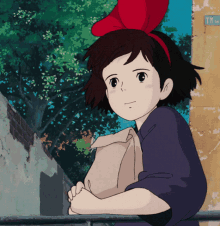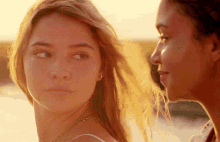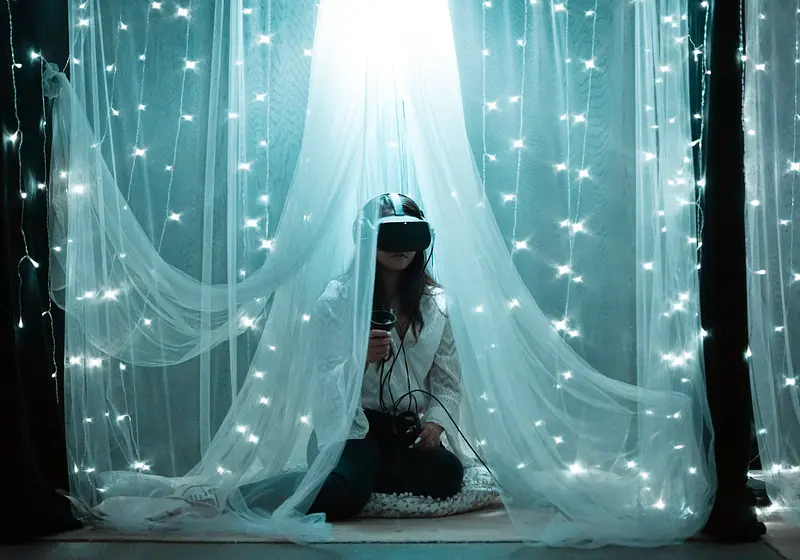Artificial intelligence has been a transformative power within the art world in recent years, changing production, curation, and even how individuals consider creativity. As much as AI-generated works have created a stir and disrupted traditional art markets, they also invite a valuable consideration of authenticity, emotional resonance, and the nature of creativity.
Revolutionary as AI is, it cannot match the profound, lived experience that goes into traditional artwork. Based on contemporary writings and my experience as an artist and docent, I feel this technological revolution will cause human beings to appreciate human-created art even more.
Let us slide into your dms 🥰
Get notified of top trending articles like this one every week! (we won't spam you)AI's Influence in the World of Art

Image Credit: Julien Tromeur from Unsplash
Revolutionizing Artistic Creation and Curating
Artificial intelligence tools like DALL-E and Midjourney have leveled the playing field in creating art by allowing users to generate visually appealing art easily and quickly, with no skill involved. This new method of art creation defies the traditional perception of authorship and creativity, and curators and museum galleries are redefining the concept of art. Institutions are now organizing exhibitions that combine algorithmically generated images and human-generated works, thus initiating a conversation between digital creativity and traditional craftsmanship.
A 2022 study by Elzė Sigutė Mikalonytė and Markus Kneer states that while viewers might judge AI-generated art similarly to human-created art in terms of its artistic status, they are less inclined to associate true artistic intentionality with a machine. The research makes me reconsider the significance of the human experience in an artwork. AI can mimic stylistic elements and create new pieces, but it cannot fully capture that experience.
Take the Quiz: Which Extracurricular Activity Fits Your Personality?
Want to take up an extracurricular activity but not sure which one fits your personality? Then this is the quiz for you!
Transforming the Role of the Viewer and the Artist

Image Credit: Dan Cristian Pădureț from Pexels
Artists are now positioned as producers and curators of digital content, employing AI as a tool, not a replacement. Hybridization, however, raises urgent issues about originality and the nature of creativity. AI advances by reconfiguring pre-existing information less frequently with the intuitive leaps and emotional resonance that characterize human creativity. Consequently, art viewers and critics have grown more sophisticated, preferring the tentative nuances and imperfections that mark traditional artworks.
Museum galleries themselves are evolving. In curating, AI art has introduced questions of authenticity and aesthetic value. These museums now must be responsible for educating visitors on the limitations of AI-created art, even as they are struck by its novelty. In this evolving environment, the inherent value of human imagination is becoming increasingly evident.
Why AI Falls Short of True Artistic Expression

Image Credit: Google DeepMind from Pexels
The Limitations of Algorithmic Creativity
While AI excels at pattern recognition and can generate pretty pictures, it does so out of statistical correlation and not of creative insight. True artistry is the blend of cultural, emotional, and experiential factors that cannot be algorithmically reproduced.
A 2023 study titled “Does an Emotional Connection to Art Really Require a Human Artist? Emotion and Intentionality Responses to AI‐ versus Human‐Created Art and Impact on Aesthetic Experience” reported that viewers tend to report stronger emotional responses (and attribute intentionality) to human‐created art compared to AI‐created art.
AI's "creativity" is derivative by nature. It can't think about itself, be spontaneous, or dip into a repository of personal experiences and emotions. The subtleties in brushstroke, the intentional imperfections, and the vitality that emanate from a piece of hand-painted art are not aesthetic choices.
In fact, they are manifestations of the artist's experience, travail, and triumphs. Absent this background, AI art looks like a high-tech pastiche—a masterful simulation without the soul.
The Inimitable Human Touch
The human artist not only “creates” images, but narrates them, showing the audience a vulnerable and personal view. Traditional art also carries an intrinsic narrative that transmits shared human experience, social truths, and cultural heritage. Cognitive science teaches us that narrative depth is inseparable from how we see and value art, giving it authenticity and emotional significance, which AI, no matter how advanced, cannot replicate.
Newfound Value of Traditional Art

Image Credit: Chris Czermak from Unsplash
A Catalyst for Revaluation of Culture
The creation of AI art has, unexpectedly, encouraged others to examine and value once more the qualities of traditional art. With works placing into perspective what machines can and cannot do, they inadvertently bring into relief the uniquely human qualities of imagination.
Museums and galleries are capitalizing on this juxtaposition by hosting exhibitions that invite the viewer to compare the mechanistic precision of AI with the idiosyncratic life of human-generated art. This recontextualization not only helps to assert the value of traditional approaches but also initiates a broader debate regarding the shifting role of art in society.
Personal Reflections and Experiences
On my own trajectory—shaped by long painting sessions and varied through various experiences such as the RISD Pre-College Art & Activism Track—I have come to value the cultural and emotional narratives that constitute the foundation of traditional art. Having been a docent at the Nova Southeastern University Art Museum and currently involved in museum shows and programming like "Memory Soup," I have seen firsthand the powerful impact of human creativity on the viewer.
Having worked with organizations like the National Art Honor Society and the Teen Art Council, my understanding has only become more solidified; that art gets its strength from its truth and how it speaks to individuals personally.
Through conducting artist talks, gallery tours, and hands-on workshops, I have seen firsthand how art allows for dialogue—a dialogue in which imperfections, context, and real-life experiences converge to create a deeper understanding of our world. These experiences have solidified that while AI may produce breathtaking images to the naked eye, it remains a tool that, despite its dazzling technical abilities, remains incapable of capturing the elusive magic of human creativity.
So What Now?

Image Credit: Snow White from Pexels
As we navigate the novel landscape of digital art, we can see that AI, in all its technical sophistication, remains in a system that fundamentally differs from that of human artists. Its inability to feel, sense, and reflect prevents it from producing artworks that connect on a basic human level.
This shortfall, however, has seen renewed passion for modern art—a medium of art that condenses the intricacy of human experience, emotion, and cultural heritage. By facilitating critical dialogue between the new and the old, museums, galleries, and artists are collectively ensuring that as technology evolves, the indomitable human spirit under art remains irreplaceable.
With the rapidity of technological development in our time, the disparity between AI-generated art and conventional craft provokes us to inquire about what creativity is at all. It reminds us that while computers can generate beautiful art forms, the essence of art—the ability to tell stories, evoke emotions, and encapsulate the nature of human life—belongs solely to the human artist.

Image Credit: Thomas Balabaud from Pexels














